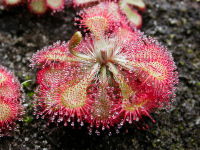
Photo from wikipedia
Due to their unique characteristics, nanoparticles are increasingly used in agricultural production through foliage spraying and soil application. The use of nanoparticles can improve the efficiency of agricultural chemicals and… Click to show full abstract
Due to their unique characteristics, nanoparticles are increasingly used in agricultural production through foliage spraying and soil application. The use of nanoparticles can improve the efficiency of agricultural chemicals and reduce the pollution caused by the use of agricultural chemicals. However, introducing nanoparticles into agricultural production may pose risks to the environment, food and even human health. Therefore, it is crucial to pay attention to the absorption migration, and transformation in crops, and to the interaction with higher plants and plant toxicity of nanoparticles in agriculture. Research shows that nanoparticles can be absorbed by plants and have an impact on plant physiological activities, but the absorption and transport mechanism of nanoparticles is still unclear. This paper summarizes the research progress of the absorption and transportation of nanoparticles in plants, especially the effect of size, surface charge and chemical composition of nanoparticle on the absorption and transportation in leaf and root through different ways. This paper also reviews the impact of nanoparticles on plant physiological activity. The content of the paper is helpful to guide the rational application of nanoparticles in agricultural production and ensure the sustainability of nanoparticles in agricultural production.
Journal Title: Materials
Year Published: 2023
Link to full text (if available)
Share on Social Media: Sign Up to like & get
recommendations!